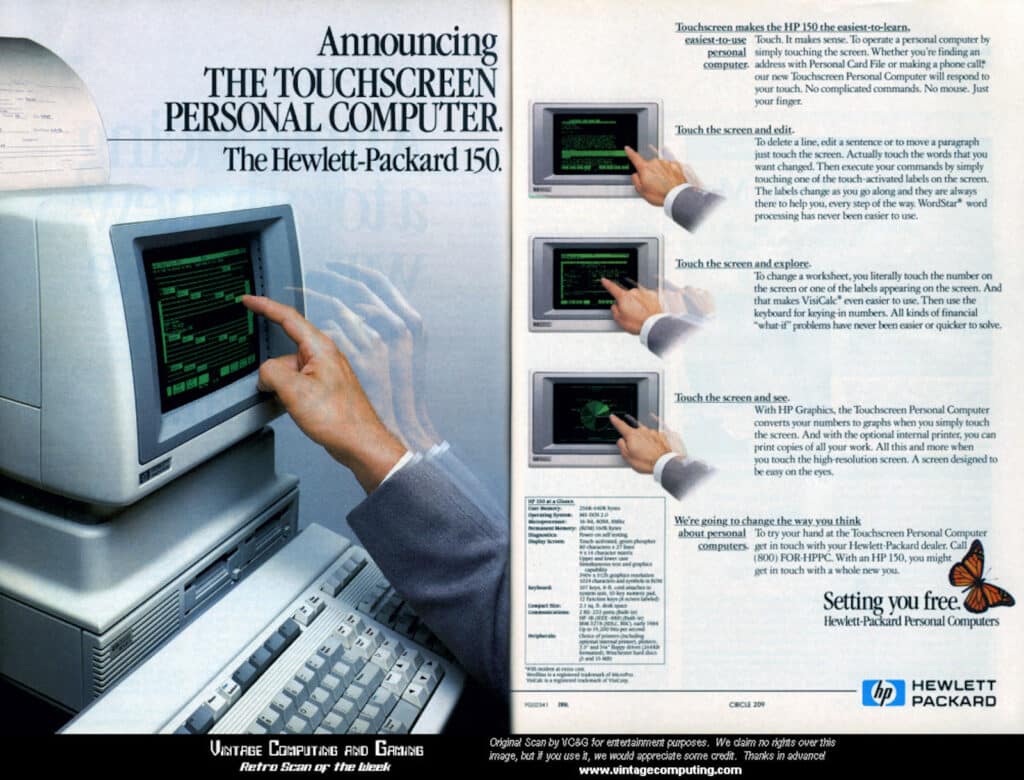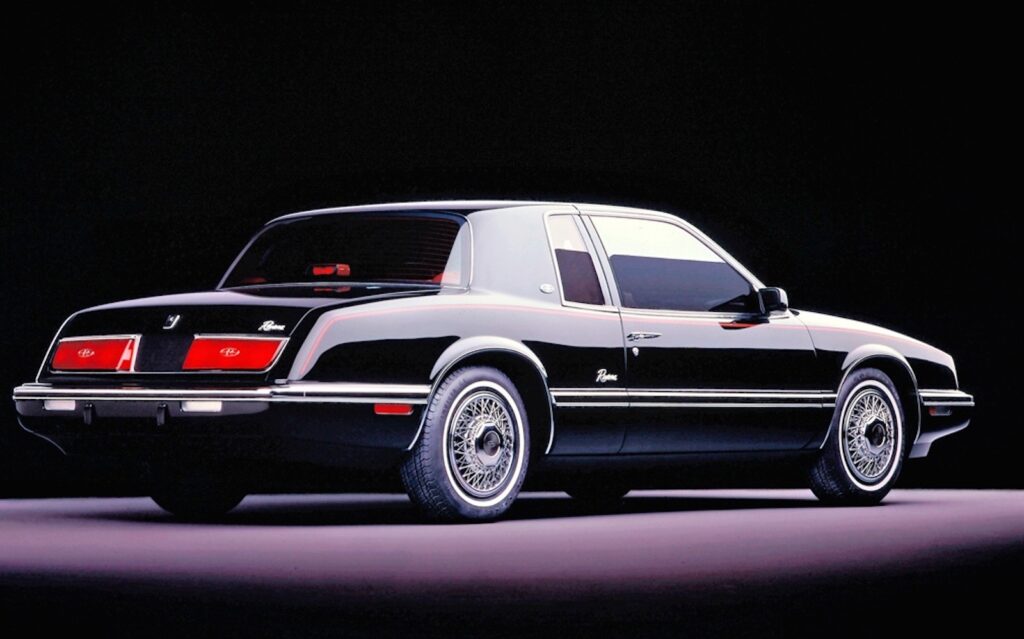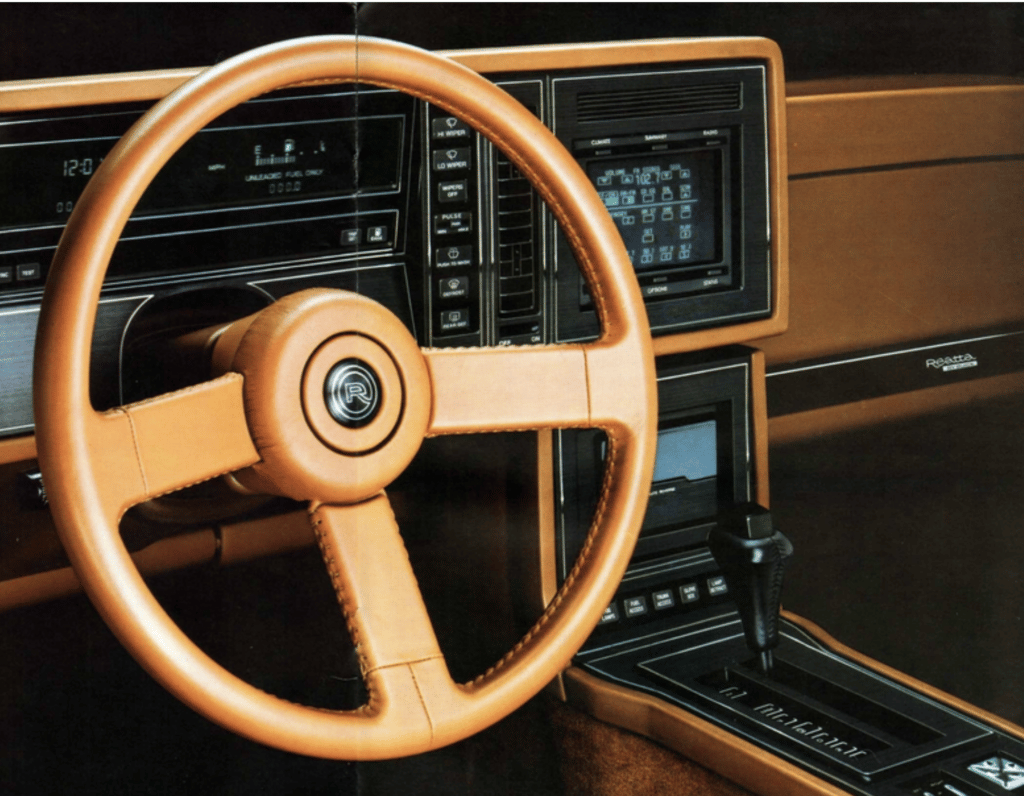Table of Contents

The race is on among the world’s automakers to fill cars with more and more touchscreens. It’s a high-tech arms race, one that dates to this week in 1986, with the introduction of the car that forged its use, the 1986 Buick Riviera.
Certainly it’s a car that’s overlooked due to its lack of popularity as sales plunged 66% from 65,305 units in 1985 to 22,138 units in 1986.
Its plummeting popularity stemmed from the fact that it seemed smaller and less luxurious than before, even though it was the first to use a modern infotainment system. Given that it might take up to five years to design and engineer new models at the time, Buick’s introduction of the touchscreen as standard equipment in the Riviera in 1986 was absolutely cutting edge.
The idea of a touchscreen in a car was clearly revolutionary as it used what was then, new technology. Yet touchscreens date to 1965, when it was created by E.A. Johnson at the Royal Radar Establishment in Malvern, United Kingdom. The 1970s saw the introduction of touch screens in air traffic control systems, but they wouldn’t reach the consumer market until 1982, when Hewlett-Packard released the HP-150, a personal computer with a 9-inch Sony touch-sensitive cathode ray tube, or CRT. But General Motors’ decision to put a touchscreen in the Buick Riviera predates that, making its development even more remarkable.
Creating a high-tech flagship

In November 1980, Buick managers in Flint, Michigan set an ambitious goal for the next Buick Riviera. They would design it with the industry’s most advanced electronics for 1985. A committee was quickly formed to evaluate which features would be offered on the screen.
As chance would have it, Delco Systems, then a division of General Motors, was developing a touch-sensitive CRT in Santa Barbara, California, at the same time. With hardware created by Delco Electronics and AC Spark Plug, and software designed by Delco Systems, it was presented to GM’s Product Policy Group within a few months and approved for production in early 1981. The screen’s parameters were determined by 1983, and the following year, 100 Rivieras were used to assess consumer reaction.
What they created
Dubbed the Graphic Control Center, the GCC was a CRT screen covered by an invisible Mylar panel covered with transparent conductors arranged in rows and columns. Each one was encoded to execute a specific function on a specific page. Each switch’s role changed with the page changed.
CRTs take a few seconds to warm up, so the GCC’s circuitry activated when the driver’s door handle was touched. By the time the driver’s door opens and closes, the display came on, revealing the Riviera logo. Once the car is started, the display goes to its home page. There, 90% of a driver’s wishes can be controlled. If the screen isn’t touched within 30 seconds, it turns off. The GCC controls the automatic climate control, AM/FM radio and graphic equalizer, trip calculations, gauges and vehicle diagnostic information.

Public reaction
Buick executives were enthralled, including Cary Wilson, who first studied the idea in 1980. “A new generation of automobile electrical systems is at hand, and Buick has set the stage,” he said in 1986.
Others, such as legendary automotive journalist Brock Yates, were less upbeat.
“The reality of the Graphic Control Center is a bad joke,” he wrote in September 1986. “The Riviera’s setup does nothing that a conventional array of knobs, buttons and analog instruments could not do in a fraction of the time.” Colleague Rich Seppos agreed. “The Riviera’s high-tech CRT isn’t an advance, it’s a handful.”
Despite the backlash, Buick installed the GCC in the 1988-1989 Reatta as well before an updated model — Oldsmobile’s Visual Information Center — became optional on the 1989-92 Oldsmobile Toronado Trofeo. Sony created the system’s 4-inch full-color touchscreen. A Motorola mobile phone that could be operated via the screen was optional.
Whereas critics once mocked these and other early attempts at touchscreens, new cars, like the Tesla Model 3, come with all of their controls on a touchscreen and nowhere else. Expect touchscreens to handle the majority of controls, if not all of them, as screen technology advances.
It’s a trend that started on the 1986 Buick Riviera.






More Stories
TAG Heuer Releases A Special Edition Monaco Watch In Time For The 2022 Monaco Grand Prix
History On the Light Box
Review: The 2022 Honda Passport TrailSport trucks up